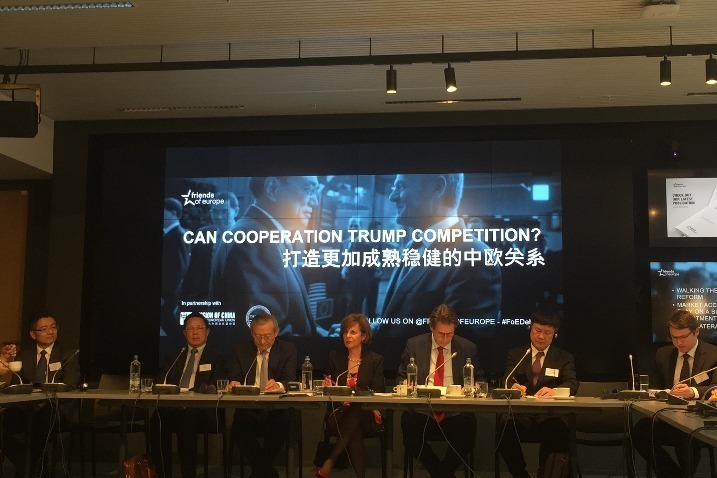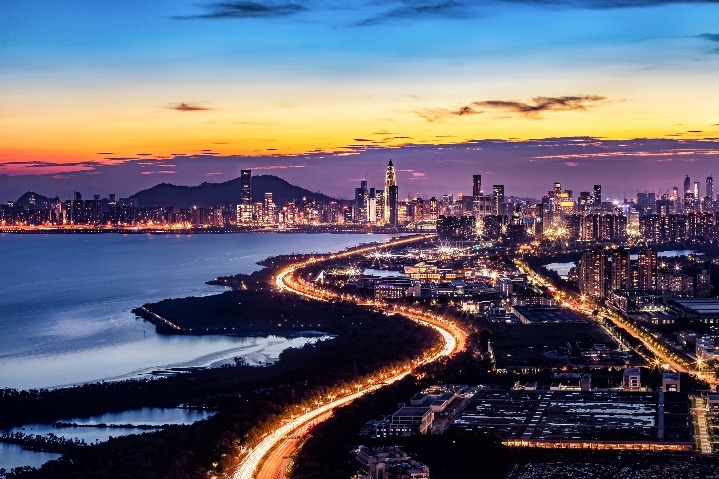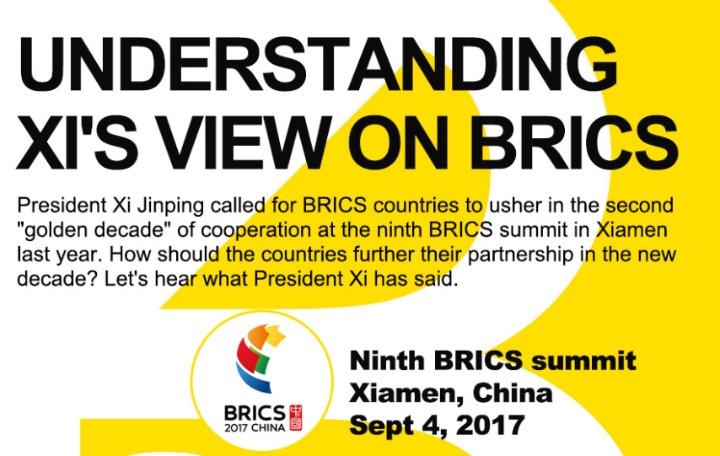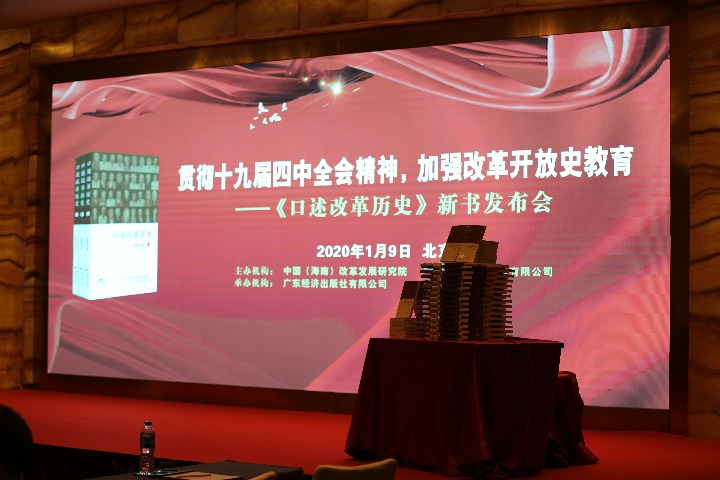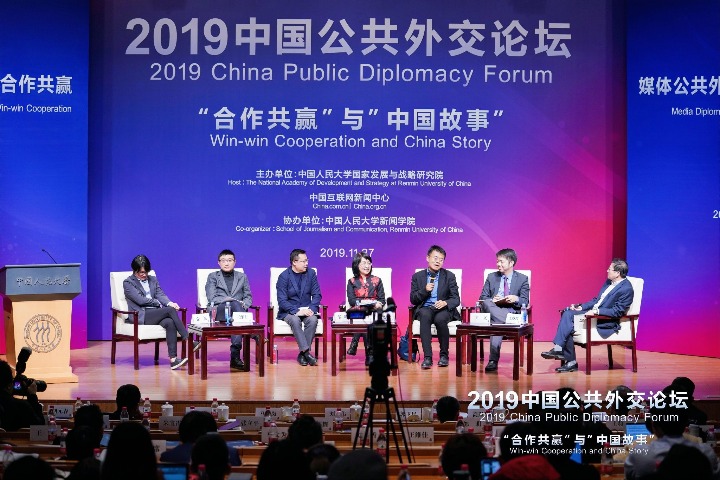Chinese journey of an Indian family
By Atul Dalakoti |
chinawatch.cn |
Updated: 2019-04-26 14:28
The China journey of my family began in 1956 when my father, Janaki Ballabh, traveled from Delhi to Beijing to work as a foreign expert with the Foreign Languages Press. He was later to be joined by my mother, Shayma Ballabh, who would become the first Hindi announcer at Radio Beijing. This move was a defining moment in the close relationship my family was going to develop with China and its people. He traveled from Delhi to Calcutta and then took a flight from Calcutta to Hong Kong where he broke journey for night nights. Then he took a train to the fishing village of Shenzhen, where he was met by his Chinese colleagues, to take another train to Guangzhou. After staying overnight in Guangzhou he took a long train journey to Beijing which took more than two days. As the Yangtze bridge was not yet constructed, the whole train had to be put on a barge to cross the river. After a journey of about a week he finally reached his destination, Beijing.
This is how his journey to China began. He has translated Chairman Mao’s Selected Works, Journey to the West, Selected Works of Lu Xun and many other important Chinese literary works into Hindi, India's main language. Even today he is in the process of finishing the Hindi translation of President Xi Jinping’s book, The Governance of China II, at the ripe age of 90. He finished the first volume of the book last year and it should be published by Foreign Languages Press soon. In 1961 he was awarded the Peace and Friendship Award by Premier Zhou Enlai.
I came to China for the first time in September of 1977 as a 13-year-old, flying from Delhi to Mumbai and then taking a connecting flight to Beijing. From the time my parents went back to India in 1961 and came back in 1977, nothing much had changed in Beijing. I got a chance to learn Chinese and also had the good fortune to study history at Peking University which helped me develop a deeper understanding of the Chinese nation and create a lifelong bond of love for the Chinese people and its culture.
For a young person coming from India it was indeed a great experience to be part of this transformation taking place in China. China was full of opportunities and the young people in China were working hard to change their lives and make up the years that their families had lost during the "cultural revolution" (1966-76). Those were times when the world was not able to understand the extent of the transformation taking place in China and viewed the changes as transparent. They would be proved wrong by history.
China, like India,was a developing country and day-to-day life always reminded us that things were in short supply. I remember traveling from Friendship Hotel to the Friendship Store to get basic necessities, a good 50-minute commute in a bus. We needed coupons for everything, without which even if you had money, you could not buy. It was an economy based on tight rationing of everything. And then we had the new policy of reform and opening-up put forward by Deng Xiaoping and China started showing the first signs of change. A lot of friends who have not been in China at that that time do not really appreciate how much hard work went into the whole process of economic liberalization and how many doubts there were in the minds of friends of China that the country was going to become like any other Western nation and lose its identity in the whole process of economic development and globalization.
In the 1980s we saw the real opening-up and liberalization and started to witness the amazing economic revival of the Chinese economy. To start with, some coastal cities were declared Special Economic Zones. I used to visit Guangdong and Hainan and most of the imports to China used to happen at these SEZs where it was much easier to operate. This did lead to fast-paced development in these cities and Shenzhen became a major center of economic growth. The change in the other parts of the country was slow as the resources were quite limited. The biggest question in one’s mind at that time was how these pockets of affluence which had been created in the SEZs would play out in the future.
Reforms gathered pace in the 1990s and the blueprint of China being a major manufacturing base of the world started taking shape. Even though China still was at the lower end of the value chain and the quality, design and logistic bottlenecks were areas of concern, one could make out that things were changing. Investments into China were increasing every year and they were not only bringing money but the latest technologies and management principles which became the cornerstone of the Made in China revolution. These new businesses were also acting as incubators for future Chinese entrepreneurs where the future leaders were being trained in the latest business principles.
I found a great eagerness in China to learn the ways of the developed Western countries and the concept of nation building was getting to be part and parcel of the scheme of economic development and opening up. English was quite a hurdle in foreign trade and every young person in China wanted to learn the language. There is no doubt in my mind that education has played a most important role in the transformation of China and the family focus on education which is even more acute today, makes China open and willing to new ideas and latest technologies.
On a personal note, I have two daughters, Astha and Abha, who grew up in China and are going to take the friendship that our family has developed with China to the next generation. They are native Chinese speakers with an understanding about China which is quite different than most of the foreigners who come to China, having being educated in Chinese schools and living most of their formative years of their life in China. They have a great love for the Chinese people and are always going to have a part of them connected to China.
Fast forward to today , and we have China as the second-largest economy in the world. China has been the growth engine of the world for the last three decades and has now become the center of AI, Big Data and 5G that are going to define the development of the global economy in the coming years. This is truly going to change the meaning of the word connectivity. This new world will create an international community which would have a common value system and a shared bright future for all. As President Xi Jinping mentioned, “The people’s wish for a good life is our goal” and achieving the dream of peace and prosperity is a shared desire of people all over the world.
China in the last four decades has brought 700 million people out of poverty which is one of the real miracles of economic transformation in the world. This has created a new market which is unparalleled in the world and that is why all big multinational companies look at China with a lot of hope as their Western markets are getting saturated and real growth is coming from markets in China and India. This is true for all the big brands in consumer goods or in automobiles. These companies have set-up manufacturing bases in China from where they are not only catering to the China market but also to the markets in the region and sometime to the whole world.
China has put together a world class infrastructure which is envied by one and all in the world and which is truly state of the art. Chinese companies have acquired great experience in developing this world class infrastructure which includes high speed railways, metros, expressways, highways, bridges, ports, airports, economic zones and smart cities. This has also become an important growth engine as China looks to do projects all over the world to try to share the experience its companies have in making the infrastructure in record time and at unbelievable prices. With the possibility of funding from China becoming a reality, these companies are looking at opportunities all over the world and are very keen on creating connectivity on the ground to give an impetus to foreign trade and globalization.
In parallell, India has become the fastest growing major economy in the world, with economic growth of 8.2 percent in the last quarter. This is not a one-off fast-paced growth quarter but has been sustained for a few years and as things stand today, would be sustainable for the next 20 years and most likely gather more pace. The focus of growth has now shifted to India and China; and we can say the engines of global growth are now firmly in Asia.
The top leadership of both India and China are keen on developing a good relationship between the countries. This was quite evident from the informal summit between Indian Prime Minister Narendra Modi and President Xi held in Wuhan where the leaders spent 10 hours together in less than two days and discussed a lot of issues in a very informal setting.
In the later part of this year we are likely to see a visit from a top Chinese leader to India. All these developments point to warming relations and now is the time for both the countries to break out from the “trust deficit” and work together to change the shared destiny of more than 2.7 billion people. This truly will be an international rejuvenation.
India is keen on developing its infrastructure which over the next 10 years is a huge opportunity for other countries, especially China, as India is going through a similar phase of economic development that China has gone through and there is great synergy between these two neighbors which have cultural and economic ties going back a long time. They certainly are natural allies and should work together.
Given such a backdrop, the way India and China are going to work together is certainly going to define the economic and political road map of not only Asia but the whole world in the 21stcentury. Future growth will be knowledge-driven and both India and China have done very well in this. China is a society that is aging fast but in India 70 percent of the population is under the age of 35. These two economies can complement each other to create a win-win situation.
India-China bilateral trade has crossed $80 billion per year and I very strongly believe that we should aim to reach a bilateral trade of $200 billion as soon as possible. Once we are able to do that, all other issues that are left over by history can be easily discussed across the table and a give-and-take approach would be the best way to solve them. No doubt there is the issue of trade deficit that needs to be addressed as growth in bilateral trade cannot be sustainable without exports and imports being roughly balanced.
Today we see a lot of voices internationally which are against globalization and are against free trade. These voices are coming from countries that till recently were putting pressure on us to open up and have been the beneficiaries of the globalization of the past half a century. When it is now our turn to have fast economic growth these voices are trying to change the rules of the game.
India and China should become champions of globalization and work together to create a new world order which is based on the principle of equity and transparency. An old Chinese saying has it that “A wise man changes his way as circumstances change; a knowledgeable person alters his means as times evolve”. Times are evolving and we need to have a comprehensive look at regional security cooperation in Asia and beyond. We need to adhere to the basic norm of having a system in place which respects territorial integrity, sovereignty and non-interference in internal affairs but at the same time have zero tolerance toward issues of terrorism, separatism and extremism.
We are in times of great change and opportunities. Connectivity between countries, physical, virtual and cultural, will play a great part in creating an environment of fast-paced economic sustainable growth which would lead to peace and tranquility in the world. We need development which is sustainable and encourages green consumption and takes cognizance of the climate change challenges faced by the world. Development has to be broad-based, and the benefits of development in one country should help its neighbors and the world. If we believe in this, we need to work hard to create a world which is interconnected and interdependent, where the traditional lines of nationalistic ideas are enhanced by greater connectivity between nations, which is a precursor of developing a new world, where there is innovation-driven growth and openness which would create a basis for peaceful, equitable and sustainable development of mankind.
China’s 40 years of reform and opening-up has indeed created a launch pad for the Chinese nation to attain its China Dream. All friends of China are very proud of the achievements of the Chinese and hope that China will play a more active role in world affairs in the future and work with other countries and regions to push forward the principles of peaceful coexistence and create opportunities that can help the Chinese people achieve more success in moving towarda moderately prosperous society by 2035 and building a modern society by 2050.
The author contributed this article to China Watch exclusively. The views expressed do not necessarily reflect those of China Watch.
All rights reserved. Copying or sharing of any content for other than personal use is prohibited without prior written permission.
The China journey of my family began in 1956 when my father, Janaki Ballabh, traveled from Delhi to Beijing to work as a foreign expert with the Foreign Languages Press. He was later to be joined by my mother, Shayma Ballabh, who would become the first Hindi announcer at Radio Beijing. This move was a defining moment in the close relationship my family was going to develop with China and its people. He traveled from Delhi to Calcutta and then took a flight from Calcutta to Hong Kong where he broke journey for night nights. Then he took a train to the fishing village of Shenzhen, where he was met by his Chinese colleagues, to take another train to Guangzhou. After staying overnight in Guangzhou he took a long train journey to Beijing which took more than two days. As the Yangtze bridge was not yet constructed, the whole train had to be put on a barge to cross the river. After a journey of about a week he finally reached his destination, Beijing.
This is how his journey to China began. He has translated Chairman Mao’s Selected Works, Journey to the West, Selected Works of Lu Xun and many other important Chinese literary works into Hindi, India's main language. Even today he is in the process of finishing the Hindi translation of President Xi Jinping’s book, The Governance of China II, at the ripe age of 90. He finished the first volume of the book last year and it should be published by Foreign Languages Press soon. In 1961 he was awarded the Peace and Friendship Award by Premier Zhou Enlai.
I came to China for the first time in September of 1977 as a 13-year-old, flying from Delhi to Mumbai and then taking a connecting flight to Beijing. From the time my parents went back to India in 1961 and came back in 1977, nothing much had changed in Beijing. I got a chance to learn Chinese and also had the good fortune to study history at Peking University which helped me develop a deeper understanding of the Chinese nation and create a lifelong bond of love for the Chinese people and its culture.
For a young person coming from India it was indeed a great experience to be part of this transformation taking place in China. China was full of opportunities and the young people in China were working hard to change their lives and make up the years that their families had lost during the "cultural revolution" (1966-76). Those were times when the world was not able to understand the extent of the transformation taking place in China and viewed the changes as transparent. They would be proved wrong by history.
China, like India,was a developing country and day-to-day life always reminded us that things were in short supply. I remember traveling from Friendship Hotel to the Friendship Store to get basic necessities, a good 50-minute commute in a bus. We needed coupons for everything, without which even if you had money, you could not buy. It was an economy based on tight rationing of everything. And then we had the new policy of reform and opening-up put forward by Deng Xiaoping and China started showing the first signs of change. A lot of friends who have not been in China at that that time do not really appreciate how much hard work went into the whole process of economic liberalization and how many doubts there were in the minds of friends of China that the country was going to become like any other Western nation and lose its identity in the whole process of economic development and globalization.
In the 1980s we saw the real opening-up and liberalization and started to witness the amazing economic revival of the Chinese economy. To start with, some coastal cities were declared Special Economic Zones. I used to visit Guangdong and Hainan and most of the imports to China used to happen at these SEZs where it was much easier to operate. This did lead to fast-paced development in these cities and Shenzhen became a major center of economic growth. The change in the other parts of the country was slow as the resources were quite limited. The biggest question in one’s mind at that time was how these pockets of affluence which had been created in the SEZs would play out in the future.
Reforms gathered pace in the 1990s and the blueprint of China being a major manufacturing base of the world started taking shape. Even though China still was at the lower end of the value chain and the quality, design and logistic bottlenecks were areas of concern, one could make out that things were changing. Investments into China were increasing every year and they were not only bringing money but the latest technologies and management principles which became the cornerstone of the Made in China revolution. These new businesses were also acting as incubators for future Chinese entrepreneurs where the future leaders were being trained in the latest business principles.
I found a great eagerness in China to learn the ways of the developed Western countries and the concept of nation building was getting to be part and parcel of the scheme of economic development and opening up. English was quite a hurdle in foreign trade and every young person in China wanted to learn the language. There is no doubt in my mind that education has played a most important role in the transformation of China and the family focus on education which is even more acute today, makes China open and willing to new ideas and latest technologies.
On a personal note, I have two daughters, Astha and Abha, who grew up in China and are going to take the friendship that our family has developed with China to the next generation. They are native Chinese speakers with an understanding about China which is quite different than most of the foreigners who come to China, having being educated in Chinese schools and living most of their formative years of their life in China. They have a great love for the Chinese people and are always going to have a part of them connected to China.
Fast forward to today , and we have China as the second-largest economy in the world. China has been the growth engine of the world for the last three decades and has now become the center of AI, Big Data and 5G that are going to define the development of the global economy in the coming years. This is truly going to change the meaning of the word connectivity. This new world will create an international community which would have a common value system and a shared bright future for all. As President Xi Jinping mentioned, “The people’s wish for a good life is our goal” and achieving the dream of peace and prosperity is a shared desire of people all over the world.
China in the last four decades has brought 700 million people out of poverty which is one of the real miracles of economic transformation in the world. This has created a new market which is unparalleled in the world and that is why all big multinational companies look at China with a lot of hope as their Western markets are getting saturated and real growth is coming from markets in China and India. This is true for all the big brands in consumer goods or in automobiles. These companies have set-up manufacturing bases in China from where they are not only catering to the China market but also to the markets in the region and sometime to the whole world.
China has put together a world class infrastructure which is envied by one and all in the world and which is truly state of the art. Chinese companies have acquired great experience in developing this world class infrastructure which includes high speed railways, metros, expressways, highways, bridges, ports, airports, economic zones and smart cities. This has also become an important growth engine as China looks to do projects all over the world to try to share the experience its companies have in making the infrastructure in record time and at unbelievable prices. With the possibility of funding from China becoming a reality, these companies are looking at opportunities all over the world and are very keen on creating connectivity on the ground to give an impetus to foreign trade and globalization.
In parallell, India has become the fastest growing major economy in the world, with economic growth of 8.2 percent in the last quarter. This is not a one-off fast-paced growth quarter but has been sustained for a few years and as things stand today, would be sustainable for the next 20 years and most likely gather more pace. The focus of growth has now shifted to India and China; and we can say the engines of global growth are now firmly in Asia.
The top leadership of both India and China are keen on developing a good relationship between the countries. This was quite evident from the informal summit between Indian Prime Minister Narendra Modi and President Xi held in Wuhan where the leaders spent 10 hours together in less than two days and discussed a lot of issues in a very informal setting.
In the later part of this year we are likely to see a visit from a top Chinese leader to India. All these developments point to warming relations and now is the time for both the countries to break out from the “trust deficit” and work together to change the shared destiny of more than 2.7 billion people. This truly will be an international rejuvenation.
India is keen on developing its infrastructure which over the next 10 years is a huge opportunity for other countries, especially China, as India is going through a similar phase of economic development that China has gone through and there is great synergy between these two neighbors which have cultural and economic ties going back a long time. They certainly are natural allies and should work together.
Given such a backdrop, the way India and China are going to work together is certainly going to define the economic and political road map of not only Asia but the whole world in the 21stcentury. Future growth will be knowledge-driven and both India and China have done very well in this. China is a society that is aging fast but in India 70 percent of the population is under the age of 35. These two economies can complement each other to create a win-win situation.
India-China bilateral trade has crossed $80 billion per year and I very strongly believe that we should aim to reach a bilateral trade of $200 billion as soon as possible. Once we are able to do that, all other issues that are left over by history can be easily discussed across the table and a give-and-take approach would be the best way to solve them. No doubt there is the issue of trade deficit that needs to be addressed as growth in bilateral trade cannot be sustainable without exports and imports being roughly balanced.
Today we see a lot of voices internationally which are against globalization and are against free trade. These voices are coming from countries that till recently were putting pressure on us to open up and have been the beneficiaries of the globalization of the past half a century. When it is now our turn to have fast economic growth these voices are trying to change the rules of the game.
India and China should become champions of globalization and work together to create a new world order which is based on the principle of equity and transparency. An old Chinese saying has it that “A wise man changes his way as circumstances change; a knowledgeable person alters his means as times evolve”. Times are evolving and we need to have a comprehensive look at regional security cooperation in Asia and beyond. We need to adhere to the basic norm of having a system in place which respects territorial integrity, sovereignty and non-interference in internal affairs but at the same time have zero tolerance toward issues of terrorism, separatism and extremism.
We are in times of great change and opportunities. Connectivity between countries, physical, virtual and cultural, will play a great part in creating an environment of fast-paced economic sustainable growth which would lead to peace and tranquility in the world. We need development which is sustainable and encourages green consumption and takes cognizance of the climate change challenges faced by the world. Development has to be broad-based, and the benefits of development in one country should help its neighbors and the world. If we believe in this, we need to work hard to create a world which is interconnected and interdependent, where the traditional lines of nationalistic ideas are enhanced by greater connectivity between nations, which is a precursor of developing a new world, where there is innovation-driven growth and openness which would create a basis for peaceful, equitable and sustainable development of mankind.
China’s 40 years of reform and opening-up has indeed created a launch pad for the Chinese nation to attain its China Dream. All friends of China are very proud of the achievements of the Chinese and hope that China will play a more active role in world affairs in the future and work with other countries and regions to push forward the principles of peaceful coexistence and create opportunities that can help the Chinese people achieve more success in moving towarda moderately prosperous society by 2035 and building a modern society by 2050.
The author contributed this article to China Watch exclusively. The views expressed do not necessarily reflect those of China Watch.
All rights reserved. Copying or sharing of any content for other than personal use is prohibited without prior written permission.





